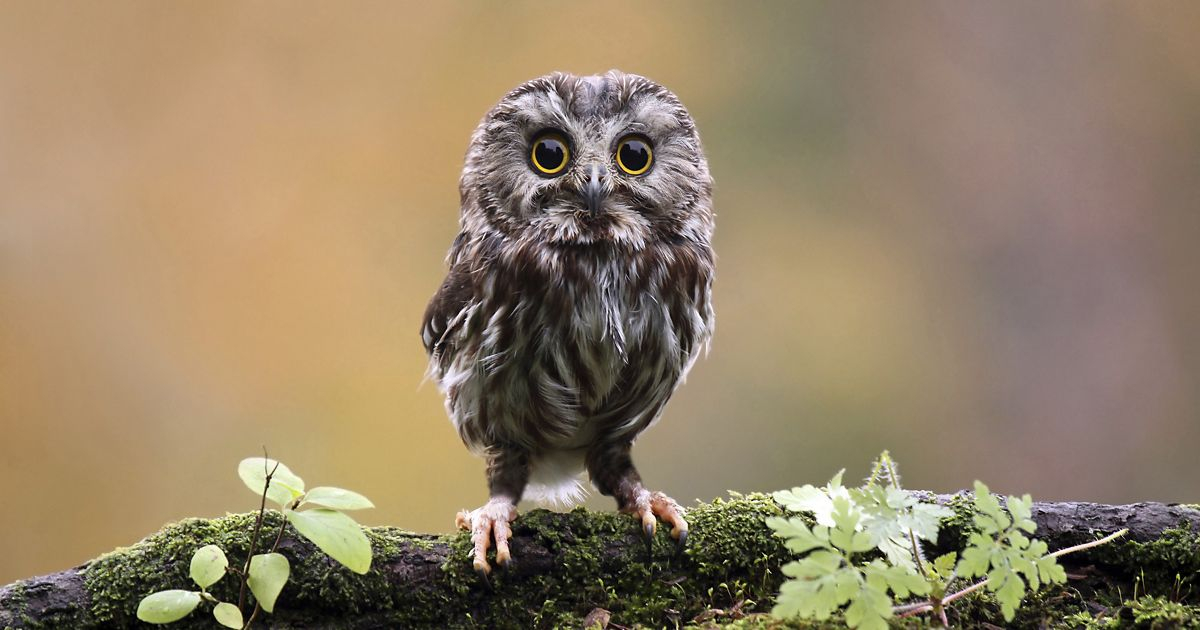Owls, the enigmatic creatures of the night, have fascinated and intrigued humans for centuries. With their haunting calls, silent flight, and captivating eyes, owls embody an aura of mystery that transcends cultures and time. Owls belong to the order Strigiformes, and they come in a stunning array of sizes, colors, and patterns. From the petite Elf Owl to the majestic Great Horned Owl, these birds have adapted to various habitats around the world. Their ability to thrive in environments ranging from dense forests to open grasslands showcases their remarkable versatility.
Nocturnal Hunters: Owls are quintessential nocturnal hunters, taking advantage of the cover of darkness to locate their prey. Their large eyes are designed for low light conditions, and they have an astonishing ability to see in the dark. A high number of rod cells in their retinas contribute to exceptional night vision.
Silent Flight: One of the most intriguing features of owls is their near-silent flight. Specialized feathers with serrated edges and soft fringes minimize air turbulence and muffle the sound of their wingbeats. This adaptation enables owls to approach their prey silently, making them stealthy and efficient predators.
Predatory Prowess: Owls are apex predators, preying on a wide range of creatures such as rodents, insects, birds, and even fish. Their hunting techniques vary based on their size and habitat. Some, like the Barn Owl, employ a keen sense of hearing to locate prey in the darkness, while others like the Snowy Owl rely on their powerful vision to spot prey from a distance.
Exceptional Adaptations: Owls possess remarkable adaptations that aid in their survival. Their facial discs, formed by specialized feathers, funnel sound waves to their ears, enhancing their ability to pinpoint the exact location of prey. Additionally, their necks are capable of rotating up to 270 degrees, allowing them to scan their surroundings without moving their bodies.
Cultural Significance: Throughout history, owls have held diverse cultural meanings. In some cultures, they are symbols of wisdom, intelligence, and knowledge. In others, they are associated with mystery and magic. Their distinct calls have been interpreted as omens, and their presence in mythology and folklore has added to their mystical allure.
Parental Devotion: Owls display remarkable parental care. Some species, like the Barn Owl, form strong monogamous pairs and work together to raise their young. The female incubates the eggs while the male provides food. Owlets are born in a helpless state and rely on their parents for nourishment and protection until they are ready to venture out on their own.
Conservation Concerns: Despite their adaptations and unique qualities, owls face challenges due to habitat loss, human interference, and pesticide exposure. Conservation efforts are crucial to protect their populations and ensure their place in the ecosystems they inhabit.
Educational Tools: Owls play an essential role in educating us about the health of ecosystems. As predators at the top of the food chain, changes in their populations can indicate shifts in prey species and environmental conditions. Studying owls helps researchers understand the intricacies of ecosystems and make informed conservation decisions.
Myth and Reality: While owls have captivated our imagination, they have also been subject to myths and misconceptions. Superstitions surrounding owls as omens of doom or death have often led to their persecution. Educating the public about the true nature of these birds is vital to dispelling these myths and fostering a healthier coexistence.
Owls are the embodiment of the night, evoking both fascination and reverence. Their adaptations, hunting prowess, and cultural significance make them creatures of wonder. Owls serve as a reminder of the delicate balance of nature and the mysteries that still await discovery within the world around us.
